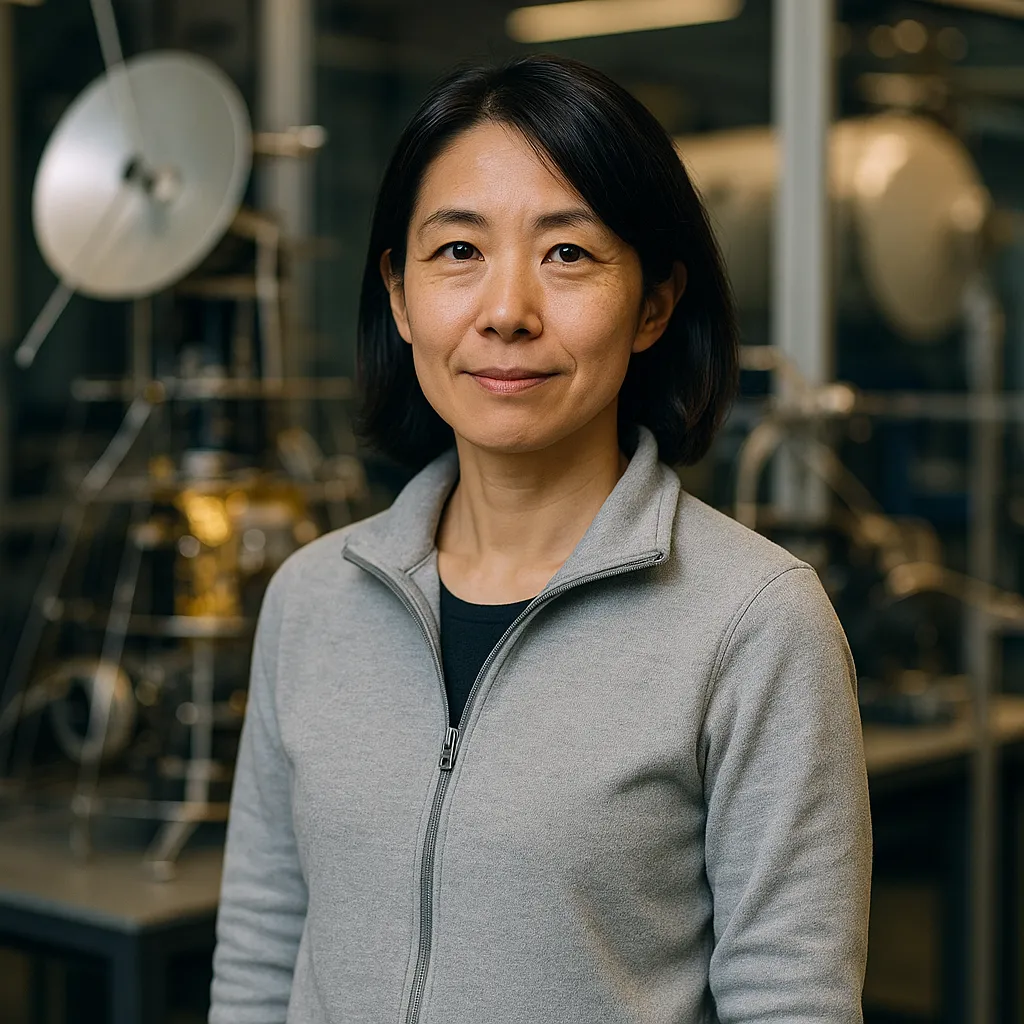Series Statement
In the sprawling laboratories of Japan's space research facilities, a quiet revolution unfolds beneath fluorescent lights and within simulation chambers that replicate the infinite darkness of space. Dr. Yuki Sato's "Harvesting Infinity" captures a pivotal moment in human history: our species' first serious attempt to harness the ultimate renewable resource—the unfiltered power of the sun as it exists beyond Earth's protective but limiting atmosphere.
The concept is audacious in its simplicity and staggering in its implications. While terrestrial solar panels operate at the mercy of weather, atmospheric interference, and the planet's rotation, space-based solar arrays could harvest energy with unprecedented efficiency, beaming it wirelessly back to Earth through precisely focused microwave transmission. The technology, once confined to science fiction, has reached the threshold of practical application in 2024, driven by advances in lightweight satellite construction and wireless power transmission systems.
Sato's access to Japan's leading space solar power research program—a function of her former career as a space physicist—provides an intimate view of humanity's expanding energy frontier. Her images document not just the technical achievements of orbital energy harvesting, but the profound shift in human consciousness that occurs when we begin to think of space not as an empty void to be explored, but as a resource to be carefully and sustainably utilized.
The series follows the complete cycle of space-based energy generation, from the geometric precision of orbital solar array testing to the ethereal beauty of wireless energy transmission experiments. Each photograph serves as both technical documentation and visual poetry, making the abstract concept of harvesting infinity tangible through careful composition and innovative lighting techniques that literally visualize energy flow.
Beyond the technical marvel lies a deeper story about humanity's relationship with our planetary boundaries. As Earth's growing population strains conventional energy resources and climate change demands rapid decarbonization, space-based solar power represents a potential pathway to energy abundance without environmental destruction. The infinite nature of solar energy in space—unimpeded by atmospheric filtering, weather patterns, or day-night cycles—offers possibilities that challenge our fundamental assumptions about energy scarcity and planetary limits.
Image Captions
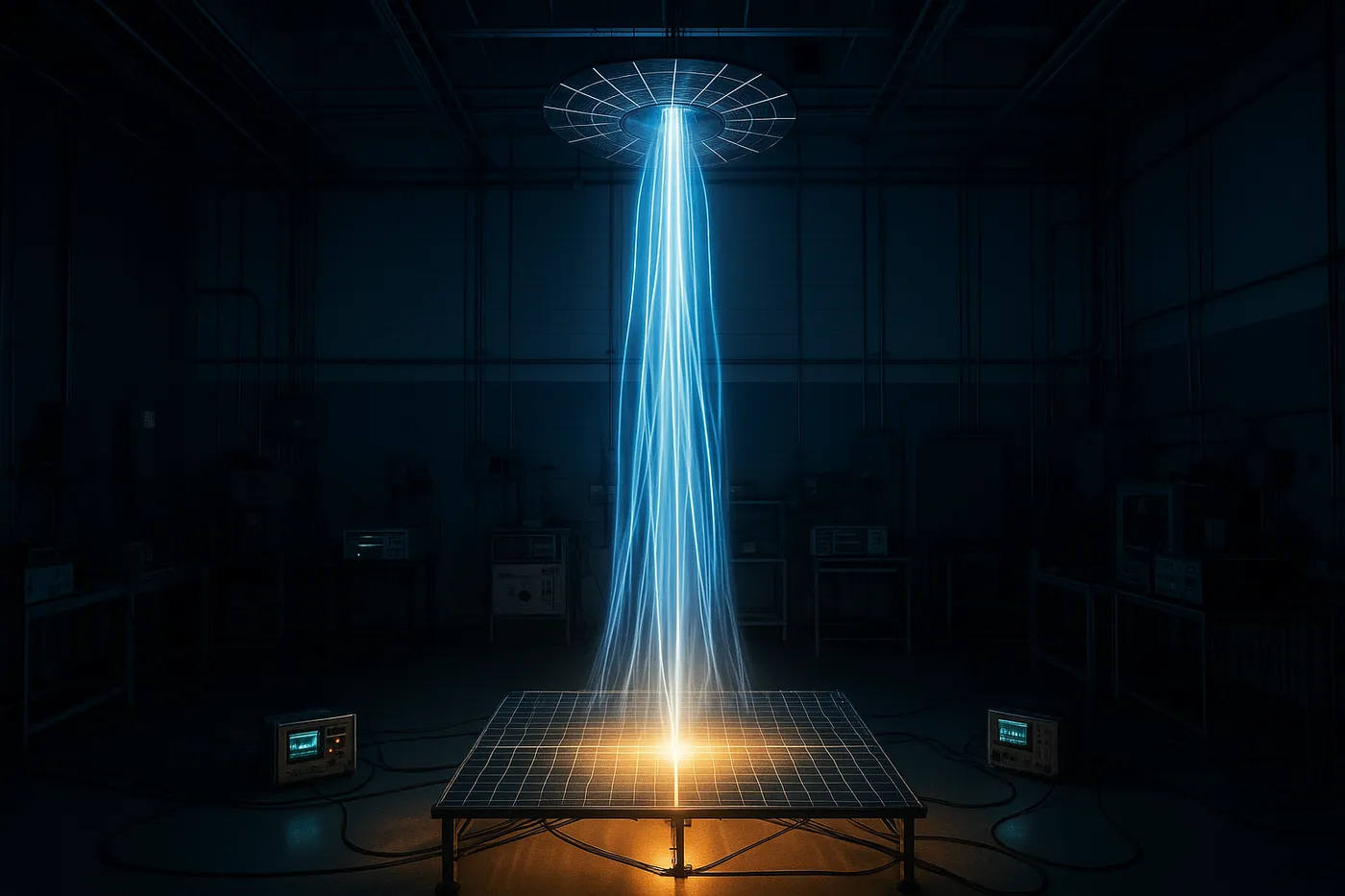
Photo 1: The Transmission Test
Ground-based receiving station during wireless power transmission experiment at Japan's Uji campus research facility, December 2024. Advanced beam visualization technology reveals energy transfer from space simulator as streams of light, demonstrating successful wireless power transmission across controlled distances. The ethereal quality of energy made visible represents a breakthrough in making space-based power transmission practically viable for Earth applications.
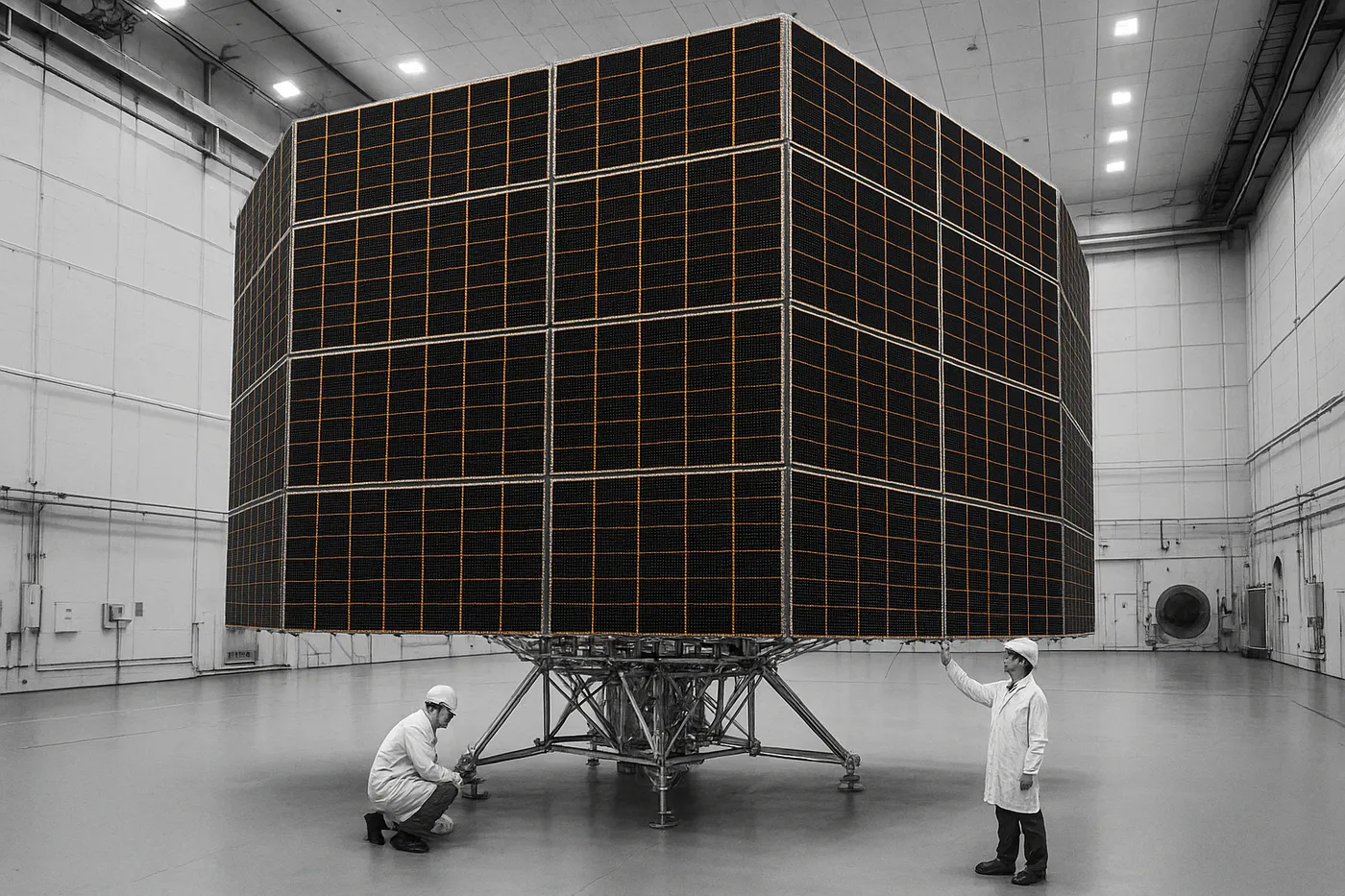
Photo 2: Orbital Ambition
Massive space solar array model undergoes testing in environmental simulation chamber at JAXA's Tsukuba Space Center, November 2024. Engineers work at human scale against the cosmic ambition of space-based energy harvesting systems designed to operate in the harsh environment of space. The geometric precision of solar panel alignment systems reflects the engineering challenges of maintaining optimal sun orientation while in Earth orbit.
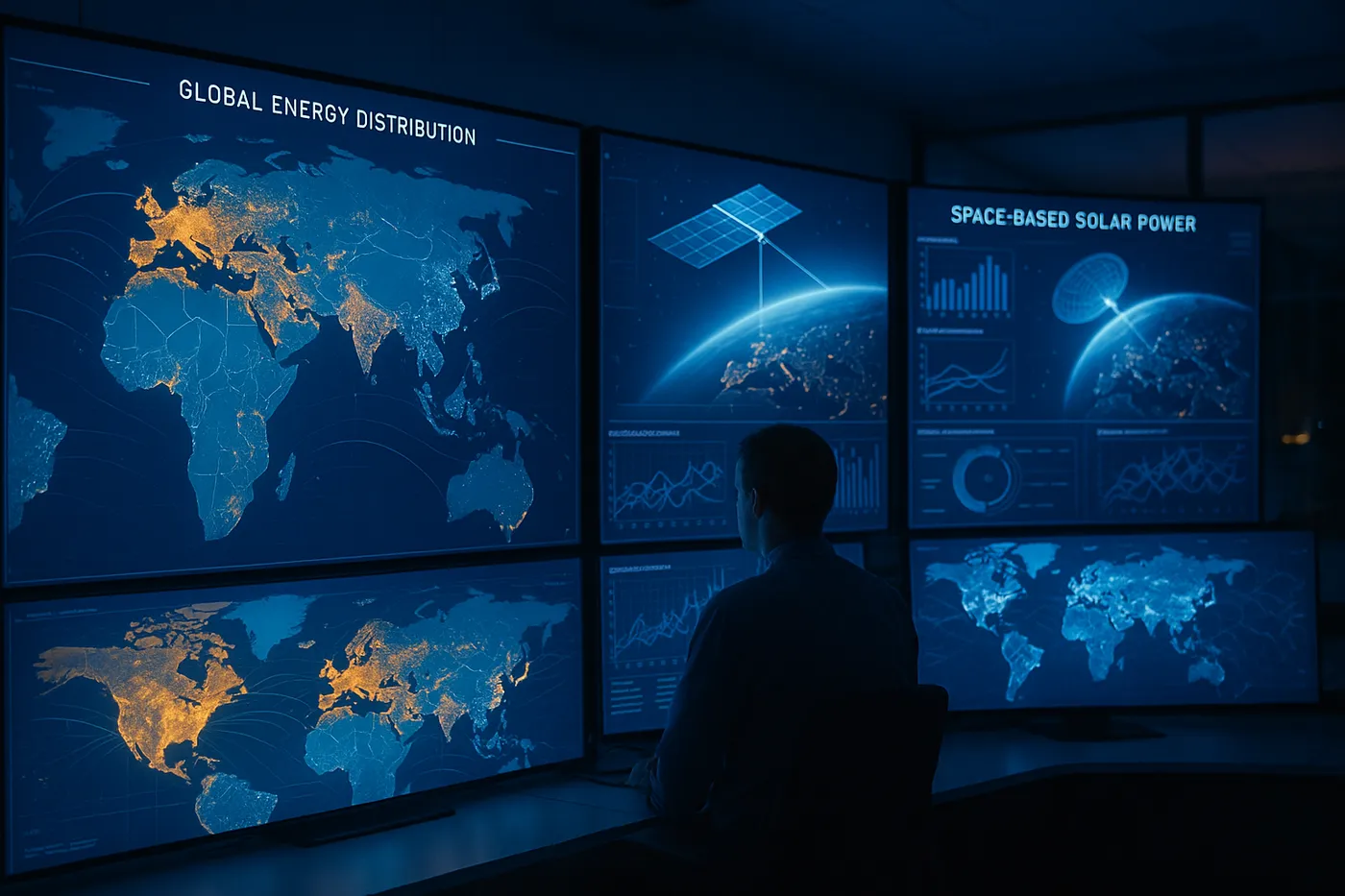
Photo 3: The Energy Map
Control room displays show global energy distribution models integrating space-based solar power scenarios at Tokyo's National Institute of Advanced Industrial Science and Technology, October 2024. Multiple screens visualize how orbital energy resources could supplement terrestrial renewable systems worldwide, offering solutions to energy poverty and climate change mitigation through space-based resource utilization.
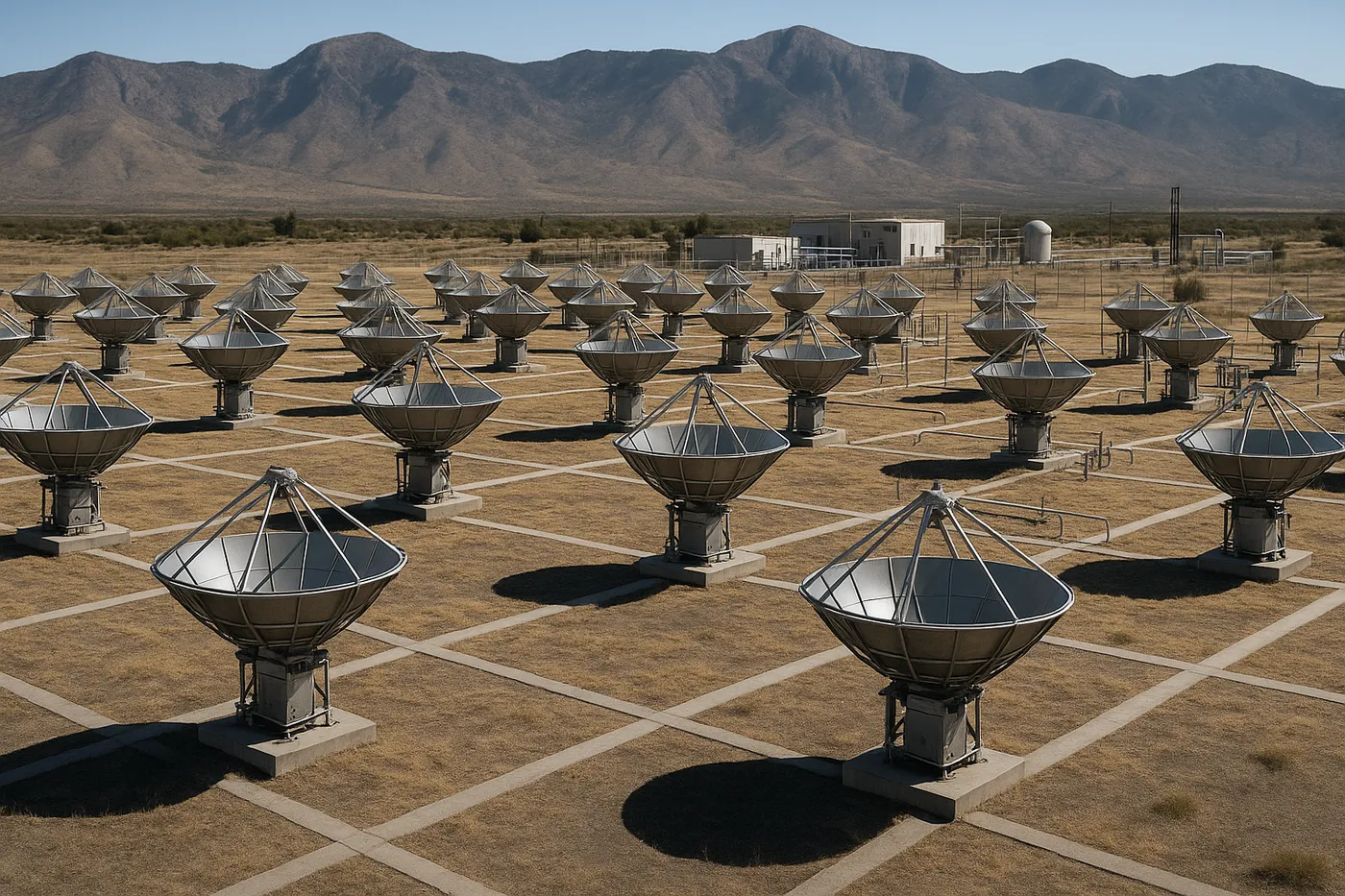
Photo 4: Microwave Garden
Field of receiving antennas designed to capture wireless energy transmission from space, arranged in geometric patterns at the Kyoto University research facility, September 2024. The installation suggests both technological precision and natural growth patterns, representing humanity's attempt to cultivate energy from the cosmos through carefully designed terrestrial infrastructure that bridges Earth and space.

Photo 5: Solar Synchronization
Time-lapse visualization of space solar panel tracking systems maintaining optimal orientation during orbital simulation testing, August 2024. The complex choreography required for consistent space-based energy generation becomes visible through multiple exposure techniques, showing the precise mechanical coordination necessary for space-based solar arrays to function efficiently across multiple orbital cycles.
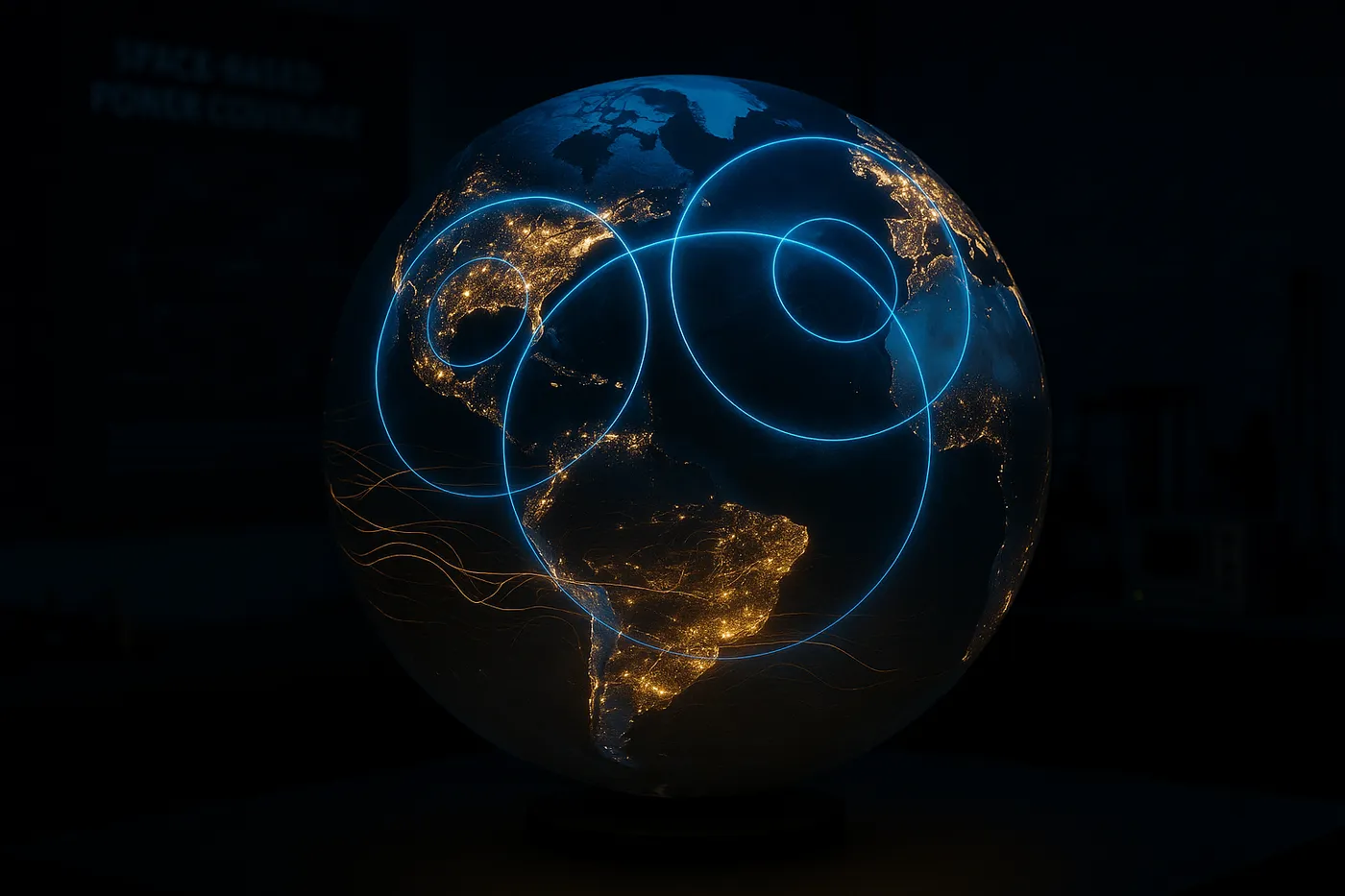
Photo 6: Earthlight
Illuminated model of Earth displays current global energy distribution patterns contrasted with theoretical space-based energy coverage at the University of Tokyo's space research laboratory, July 2024. The visualization reveals how space-based energy resources could address global energy inequality by providing consistent power to regions currently lacking reliable electricity access, particularly in developing nations and remote areas.

Photo 7: The Infinite Source
Wide-angle view of space simulation chamber during solar array testing procedures, showing human technicians working within an environment designed to replicate conditions beyond Earth's atmosphere, June 2024. The image suggests humanity's expanding resource horizon as our species develops the capability to harness the unlimited energy available in space, representing a fundamental shift from planetary to cosmic resource utilization.
Photo Series Image Prompts
Photo 1 Prompt: Ground-based wireless power transmission receiving station during active energy beam test, multiple exposure showing visible energy transmission streams connecting to space simulator above, scientific laboratory setting with precise instrumentation, shot on Canon EOS 5D Mark IV with 24mm f/8 lens, controlled artificial lighting combined with beam visualization technology, symmetrical composition emphasizing vertical energy flow, cool blue and warm golden color treatment representing energy transfer, ethereal and precise mood, award-winning photojournalism, World Press Photo style, scientific documentation excellence, National Geographic quality
Photo 2 Prompt: Massive space solar array testing model in environmental simulation chamber, human engineers working at base providing scale reference, geometric precision of solar panel systems, clean industrial laboratory environment, shot on Canon EOS 5D Mark IV with 35mm f/11 lens, even diffused lighting emphasizing technical precision, wide-angle composition showing full scope of solar array, high-contrast treatment with selective color on solar panels, industrial yet aspirational mood, award-winning photojournalism, technical documentation style, engineering photography excellence
Photo 3 Prompt: Multiple large displays showing global energy distribution maps and space-based solar power integration models, control room environment with soft screen glow, complex data visualization patterns, modern research facility setting, shot on Canon EOS 5D Mark IV with 50mm f/4 lens, ambient lighting from multiple screens, rule of thirds composition with screens creating leading lines, blue-dominant color palette with warm accent lighting, contemplative and forward-thinking mood, award-winning photojournalism, documentary photography style, technology visualization excellence
Photo 4 Prompt: Field of precisely arranged microwave receiving antennas in geometric pattern, outdoor research facility with mountains in background, technical infrastructure suggesting both precision and organic growth, clear daylight conditions, shot on Canon EOS 5D Mark IV with 85mm f/11 lens, natural lighting with sharp detail throughout, aerial perspective showing geometric patterns, metallic grays with natural earth tones, harmonious blend of technology and nature mood, award-winning photojournalism, architectural documentation style, scientific infrastructure photography
Photo 5 Prompt: Time-lapse multiple exposure of space solar panel tracking system during orientation testing, mechanical systems in precise coordinated movement, laboratory testing environment, shot on Canon EOS 5D Mark IV with 200mm f/8 lens, controlled lighting with motion blur effects, centered composition showing synchronized movement patterns, high-contrast with motion trails in warm colors, dynamic precision mood, award-winning technical photography, industrial documentation excellence, mechanical engineering visualization
Photo 6 Prompt: Illuminated Earth model displaying energy distribution patterns with overlaid space-based power coverage projections, darkened laboratory setting with dramatic model lighting, scientific visualization setup, shot on Canon EOS 5D Mark IV with 50mm f/5.6 lens, dramatic directional lighting on model with minimal ambient light, centered composition with Earth model as focal point, deep blues and warm golds representing energy flow, contemplative and hopeful mood, award-winning photojournalism, scientific visualization style, conceptual documentation excellence
Photo 7 Prompt: Wide-angle view of space simulation chamber with massive solar array testing in progress, human technicians working within space-replication environment, industrial-scale research facility, shot on Canon EOS 5D Mark IV with 24mm f/11 lens, mixed industrial and specialized lighting, wide composition showing full facility scale with human elements, metallic industrial colors with selective warm lighting on human subjects, ambitious and pioneering mood, award-winning photojournalism, industrial documentary style, space technology documentation excellence
Photographer Portrait Prompt
Japanese woman in early 40s with professional demeanor, wearing casual scientific attire, intelligent and focused expression, slight smile suggesting deep technical knowledge, standing in modern laboratory setting with space technology equipment visible in background, natural lighting, professional portrait, shot on Canon EOS 5D Mark IV with 85mm f/1.4 lens, environmental portrait style, warm professional lighting, technical background elements

